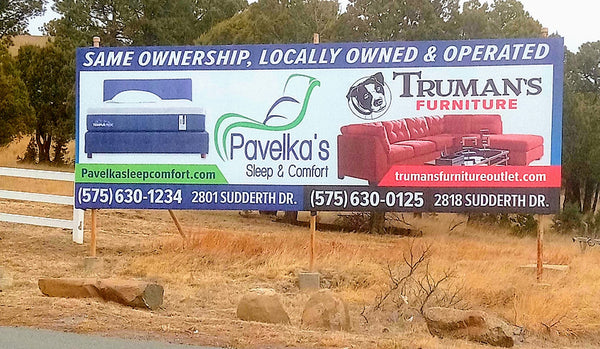
SHILOH RICHTER
13 FEBRUARY 2023

Truman Capote didn’t write BREAKFAST AT TIFFANY’S. Willa Cather did. Truman Capote stole it and Audrey Hepburn knew it. Part II.
It’s the caper of the millennium and it’s ON.

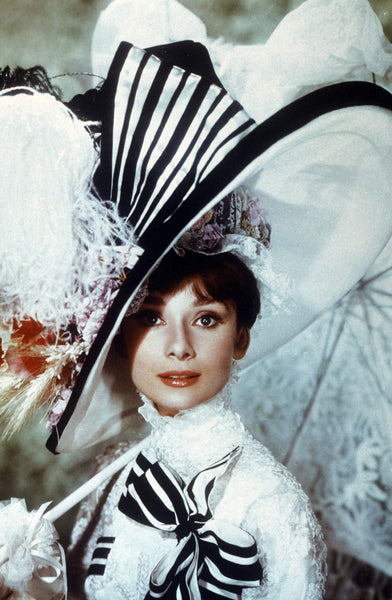

Photos: Beyoncé (online), Audrey Hepburn in My Fair Lady, and Harry Styles, Brit Awards, London, 11 February 2023.
There’s a billboard outside my home now of what used to be a place on a sacred mountain. I’ve lived here for many years in solitude with the forest and the mountaintop, my own tranquil little Plum Village, with terrain even so similar to the South of France. In this solitude is how me and my little Yorkie Vanilla Custard Pudding came to write about the caves like Chauvet there, and how our hikes and writing transported there to here, the rocks, the cliffs, the river and waterfalls, all to ourselves, there for a little while. What love and bonds, adventures and concentration in writing.

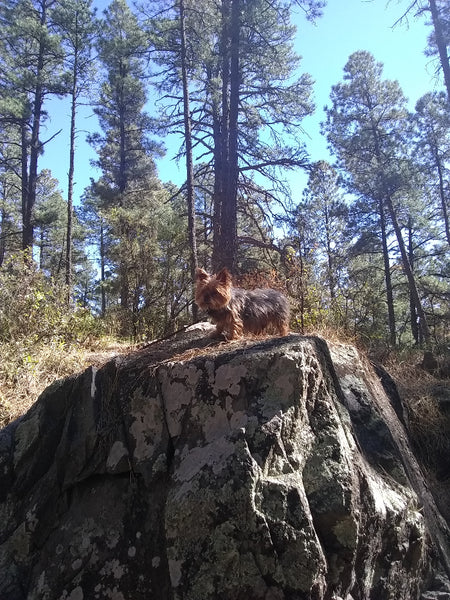
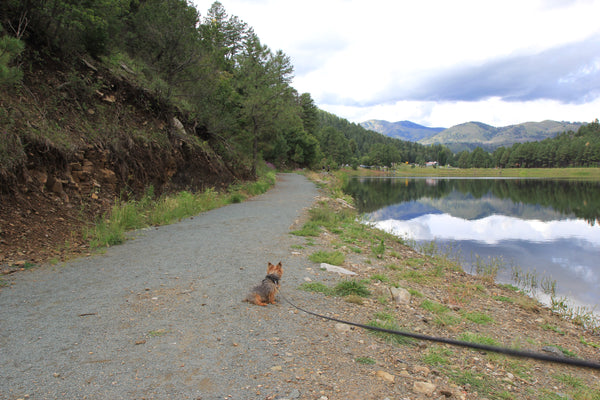

Many years into the writing I discovered this is precisely what ignited American author Willa Cather’s poetic moment of lightning bolt realization, her insight into the feminine and Place when she stood in the American Southwest and dynamically felt its enchantment and at the same time it awakened with her life-long affinity for Provençe conflagrated together into her feeling of Beingness and in the Body in that miracle moment given its solidity and freedom straight from realization of oneness with this uncontainable earth. She knew what power was. This understanding was not only the feminine, but with the physical realization of the rocks, the ground beneath her feet that spoke clearer language to the core of the physical realization–the incarnation. My deep love of both places had felt incongruent to me of the difference in cultures, what was hard to express of how it was the same to me in the aliveness of the forests, but inwardly I understood the silence of the mountains and its hidden secrets were the same. Here I walked the ground of France, but I had this enchantment here, this possibility of something like self-hood without culture, experienced not as self, but through the three doors of practical Buddhism: “emptiness, signlessness, and aimlessness” which opened the exiled experience to far more freedom of what this could be, not what we had been told it is.

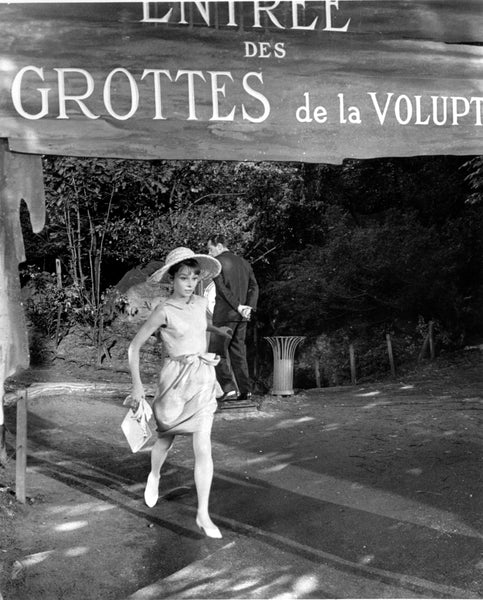
Photos: Audrey Hepburn with her beloved Yorkie, Famous; Right: Audrey coming from the caves in flight from the “thief and liar” in Paris When It Sizzles (1964)
Erase all to which we had been acculturated. The places had been so transported for me that I even had marked mine and Cussie’s footprints in clay just like the prehistoric footprints of a child and a wolf next to each other in the furthest reaches of the darkest cave of Ardeche. His wolf heart is the reason I can write, our hikes, our picnics, our bonds. It brought us to the most profound change of our lives. He became the (tiniest) bravest hiker leading our footsteps through the woods and trails. It was magical and he brought me to that. This is to say that our personal secret was met with my joyous astonishment when I could see into what Willa had radically awakened to in the cliffs and canyons right outside Phoenix, Arizona (where Rihanna is ARRIVING IN BEINGNESS and BODY this weekend), and back to the spiritual environment of Santa Fe, its atmosphere thick as if one had entered a certain latitude and longitude whose crossing formed Beingness voltage and a radical, unexpected thinning of the veil. (There’s something up here; it doesn’t operate the same. Sacred kivas were built here at the time Dante was writing the Divine Comedy which was also leading to Willa’s work.) I knew what had ignited in her and what she meant because I had been experiencing it by the move from Texas to New Mexico over a decade ago.
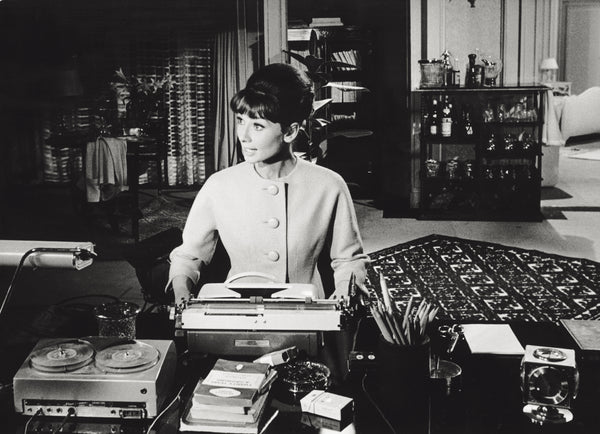
Photo: Audrey Hepburn “typing” in Paris When It Sizzles (1964).
That grounding that she felt in 1912 that would become the story of her The Song of the Lark by 1915 (exactly 100 years to when Katy Perry would be there in Arizona in her Katy Bowl) would be the basis of something of astounding importance to the possibilities of what women actually are and likewise, with it, what America could be, given that it freed itself from acculturation that emptied itself of its magic and true possibility. And the answer to that, beyond what we had imagined in what we had been taught to be were the boundaries of culture, what was predetermined for us by thought itself, was and is the feminine and spirit. And closely tied to place, there could be a re-rooting, a re-growing in a wildly different manner. And the feminine, and Place, and possibility are transformed, the bounds of what defined America from its invasive, lying, tearing-down traits broken. I could not have recognized what Willa was saying without the years of removing the acculturation slowly and painstakingly through writing and through finding freedom and freedom from suffering and regrowing, reblooming the ability to know and speak from there–what is also like Thich Nhat Hahn in his forced exile to the South of France, his life given to the Western world because he could not go home because he knew Peace. Of course I had experienced the impulse to head straight to New York City, to break into culture through beautiful creation and work, as I had so long longed to do.

Photo: Willa Cather Images Gallery, Willa Cather Archive, University of Nebraska-Lincoln Collections
There’s a difference between breaking into culture and breaking through it, and breaking through it is what Willa was determined to do, to redefine its very bounds. And for me there was this Cosmic flight pattern to the American Southwest that called to that freedom of Beingness, like the cage doors only opened the soul there to fly free and to see what things really are, a landscape of Beingness and of letting go of expectations of life before. New York City would be there, as it is for Thea, and she would transform it, but her physical realization is the Southwest, the physical realization being so vastly important, and who, in no small way, is one of Willa’s creations that is the actual Breakfast at Tiffany’s, but she, also in her other works naming it “Coming, Aphrodite!” (and her Eden Bower, among her other characters). Her works are a subtle, intense study–a sign of what had happened inwardly–of what this means and she looked very deeply into its roots and how to make it come to life. Her words were the very blood, flesh, bones, heartbeat–and spirit. This was not conquering Place but what had given her life. That’s how she could write what she was writing that made the men replicate her, trying to express, for example, that enigmatic essence that F. Scott Fitzgerald sought for Daisy Buchanan and Hemingway for Brett Ashley (and that then defined that “idea” and boundary of the male “writer,” that cold thing of intellect that institutions, even NYC, would then be defined by and admire). But Willa wasn’t skirting the issue and this was not intellect alone. In that canyon in Arizona she saw into exactly what it is, its very elements, its ingredients, its roots, its magic. In the same moment she knew the true meaning of the Southwest and Provençe, why the careful cultivation, care, and nurturance of the bloom mattered so greatly. And why it was transported to freedom here from there, the roots, and the Place of cultivation where it could grow and be free and bloom into array beyond the previous thought boundaries. I know of no other American writer who ascertained those elements and their combined elixir as Willa did, even though I do know the greatest works on earth are talking about it and leading her to it in her writing. And then with magnificent carefulness, mindfulness, and insight, she put it to creation because the words, the writing of it are the hands of IT writing what IT is. It is nothing less than a refounding of American culture from a very different kind of seed, the indomitable immigrant feminine spirit seed right from the land she shows of Ántonia Shimerda. And not the seed of arrogance and entitled appropriation, but a power within that recognizes itself as the embodiment of the Cosmos made it into this gorgeous form, and not the ground’s rapist, but its creative energy and protector. What is a city to that? A thing to be carefully defined by it, not a limitation to it, offering its definition, say of the men who try to get in Holly Golightly’s apartment, representative of her selfhood, and she brilliantly much more than the city itself–its very spirit.
And that is the true genesis of the magic of Breakfast at Tiffany’s.
Thea comes from (the fictional) Moonstone, Colorado, finds the ground of her Being in Arizona, learns to cultivate and nurture her now understood rootedness in the ancient arts in Europe where they know to take care of such a thing because it roots in the spirit, and then becomes the very Song of New York City, the flame itself. With her own spirit having come to know its depths and insight into what lives in her flesh and bones, the enigma is no longer a je ne sais quoi, but a voice of the eternal in form, and that is a magical thing for rough old buildings. Willa knew it. It is why she kept traveling back from New York to New Mexico. It is the aliveness so desperately desired in all cities. If it blooms, it’s the embodiment of love and the opening to connecting bonds closed by former definitions of institutions, one being, for example, that it's all about capitalism which puts a price tag on the spirit, of which it knows very little about. What was an opera becomes hearing the voice of the eternal come shining through, no more abstract, dismissive (dismissive because it is considered “other”) visions of angels. She just walked into the building.

Photo: Willa Cather in Paris, Willa Cather Images Gallery, Willa Cather Archive, University of Nebraska-Lincoln Collections
And that is also why Truman Capote’s personal and public invasion, tear-down, take-down of the beautiful Babe Paley and others is a avaricious, intentional, heinous crime. He viciously acted in the exact opposite of what Willa was seeing into the eternal roots of and showing its way to life. He took the gorgeous, subtle material Willa carefully wrote throughout her life and, taking her words but not her spirit, turned it into a dark fixation of what he could never be or have. And so the capers to make and retrieve Breakfast at Tiffany’s from the bowels of Truman’s mental illness and sociopathic personality disorders is a brilliant escapade of the very best and brightest to bring to light something of extraordinary change–exactly what Willa intended in the re-rooting, re-cultivation, and reimagining beyond anything we’ve known before of ourselves and of culture, of the world itself. And that is exactly what Audrey Hepburn is. We have the Beings and the Bodies. And to bring that to life of what Audrey Hepburn started in embodying that difference is Audrey opening up the world she longed to. It meant everything to her to change the world.
Just as Truman took the confidences, hopes, lives, and dreams of the women around him for his own empty, vulgar appetite, alone in his bedroom he stole Willa’s words and works, and so it is not just “oh, it’s just plagiarism” we are talking about. And as the “writer” stealing the confidences, he didn’t know the answers, he only wanted to tear down and consume for himself, to pose and prance as the writer and to maintain the façade of being the cultural phenomenon himself (keeping culture as it is with himself as the posing star), and closing off the realness and spirit by not admitting to the crimes, still desperately needing to masquerade as the “daring” criminal willing to go as far as “necessary” to prove something mental in place of “inner depth.”
And so the gift of my life here in New Mexico has come from having to be still enough, quiet enough, patient enough to be able to look into the depths, to know the magic, the purest essential nature, and then to pick up Willa’s writing again from this different state, and to find that it also picks up where George Axelrod and Audrey left it for us to bring it the rest of the way–the huge cultural transition Willa saw into. This birthing, this quiddity, has been a process of letting that voltage come and the veil thin. One wouldn’t think so since it seems we’re talking about writing in the old thought pattern way. But every step of the way when I matched the inner nature with the subject matter, with the state of the subject matter, the occurrences of not only seeing into it but literally being shown it took on substantiality no form could order up. Thus, before I knew all of this, in February 2008 when I stepped into a photograph of Willa Cather by walking into a camera shop on San Francisco Street in Santa Fe without realizing her photograph in that Moment, and when I was standing at the bird fountain in December 2010 at the historic Ursuline Academy on the San Antonio River when John Mayer was singing “A Face to Call Home” in New York City, when I wrote to John about having written multiple drafts of a screenplay called Dinner at Tiffany’s, trying to get it right over the years, when Taylor Swift abruptly and erratically grabbed the spotlight to make it publicly seem like she had had a relationship with John because of my writing to him, and then used that to exploit him (and his friends like Katy Perry and Harry Styles) for over a decade, the very pains, too, were forcing and speaking towards the InterBeingness integral to what this writing is. The suffering, as Thay says, the mud. And that mud is miraculous. What it blooms is Alicia Keys. Beyoncé. Madonna. Rihanna. Lady Gaga. Carrie Underwood. Miley Cyrus. Miranda Lambert. Ariana Grande. Maren Morris. Selena Gomez. Jennifer Aniston. Reese Witherspoon. Sheryl Crow. Olivia Wilde. Nicole Kidman. Cazzie David. Maggie Rogers. Mindy Kaling. Drew Barrymore. Kate Hudson. Wynona Judd. The Kardashians . . . Dead and Company. And they, and many more, have all been developing in involvement since the crime happened in 2010, building from 2008.
By writing it Willa knew exactly what IT IS and the path of IT. Otherwise, like Taylor for example, it would be like Thich Nhat Hahn being able to write the books he has and give the inspired dharma talks without being the very thing and practice of which he speaks, which would be insane (and the works actually empty, just relying on cannibalistic culture-eating-itself gossip, feeding the tabloids because the tabloids make money selling pain and lies). Even Thay himself has spoken of the West trying to approach his practical Buddhism through thought [and domination], not practical practice, and leaving with no insight into what the gate of mindfulness opens. It’s nothing less than the Pure Land. And those who view it with stern rigidity have never actually seen the Garden in which they live. And that’s the difference. Some don’t know where they even are. It’s a different America, a different world, envisioned by them through the acculturation and boundaries of taking and conquering. But from a careful study of intimate with Place, going right past, as an editor of McClure’s Magazine, what was being stereotyped as the masculine ‘Cowboys and Indians’ Southwest and now the trains providing a passageway to experience that envisioning, a further invasion of the first coming of how America came to be, Willa felt something very different in her very Being and the insight she had been cultivating, even from French and Latin literature since she was a child.
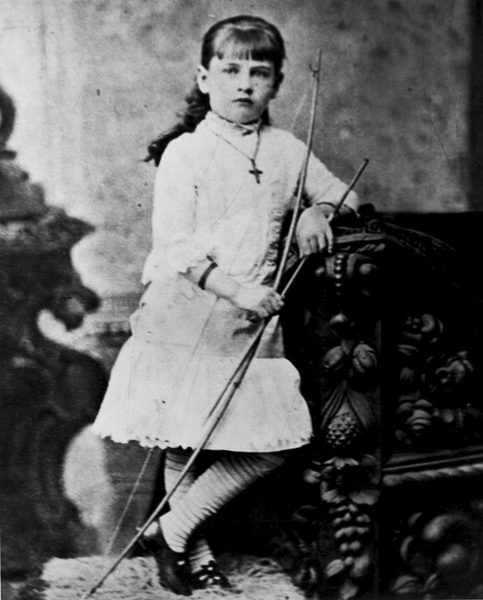
9 year old Willa Cather, c. 1982, Willa Cather Images Gallery, Willa Cather Archive, University of Nebraska-Lincoln Collections
The producers of Breakfast at Tiffany’s, Marty Jurow and Richard Shepherd, and the screenwriter George Axelrod already knew one way in which Truman had plagiarized Breakfast at Tiffany’s. In Fifth Avenue, A.M.: Audrey Hepburn, Breakfast at Tiffany’s, and the Dawn of the Modern Woman author Sam Wasson writes that the reader report of Truman’s novella read:
“it is unfortunately too similar to Isherwood’s work [Goodbye to Berlin], dramatized as I Am a Camera. The type of character is the same. Only the incidents and chronology are different, and in any event this is more of a character sketch than a story. NOT RECOMMENDED” (71).
And here is where some of the magic begins, things meant to BE already at work. Wasson continues:
“But Jurow was curious. So was Shepherd. ‘We thought there could be a feature there,’ he said, ‘because the story how a girl comes from Tulip, Texas, and gets involved with a guy in New York was at its heart a love story and could even become a marketable romantic comedy. It has an opening act in that sense, and ultimately had a potential conclusion if they got together, but we weren’t sure. There were problems.’ Maybe somewhere there was a movie in it. Maybe.”
And there was this, the problem:
“Even outside of literary circles, the name Capote had serious cachet; his talent had earned him prestige, and his flamboyance had made him into a star. In Hollywood, that combination made Tiffany’s highbrow plunder, and it would earn the one who got the rights a sizable chunk of clout.”
What was coming was George Axelrod showing he recognized Willa’s work in Truman’s. Word for word. And me knowing John’s work and my own were being appropriated.
John and I had been in the same room in Austin, Texas, in 2000–except a month apart– when he was just starting out and heading out to New York City to make Room for Squares. I intensely wanted to go to New York, but I worked on the Texas/Mexico border teaching college. Within a couple of years I went through New York City when “You’re Body is a Wonderland” had just hit the airwaves, on my way to Paris and back to NYC and then back to my ranch in Texas, and back to writing. But it was a decade later in 2010, on that very same street in Austin, Red River St., that I would finally see him in concert and he flipped my world upside down. And several months later, that summer in July I went to see him in NYC. It was all astoundingly alive with serendipity, the very wondrous. I had a seat at the concert near where he had sat at seeing one of his first concerts there. He spoke to me in the audience with references like from the movie Say Anything (1989) so that I would realize he was talking to me. I wrote too formally on Tumblr, and he was making sure I knew he was reading it. It made me laugh about the way I was writing and not opening up. Of course I cried when I got home from the pure exhilaration of it all and then going back to a very silent ranch and what I didn’t know would be many more years of writing. (I had first written to him from the place here in New Mexico, the enchanted land.) But that Red River Street where I would first be close to him and would first see him, on the map of Texas the actual Red River is the border where Tulip, Texas actually is, up by Red River . . . “Because the story how a girl comes from Tulip, Texas, and gets involved with a guy in New York was at its heart a love story.”
I had no idea it was going to lead to writing Willa, the one who had first written the words to the page and coming to know her. But already, when John was starting out in Atlanta in 1997, that year my family had come to be the new publishers of the old UCLA literary journal Books of the Southwest begun in 1957. (It was a “critical checklist” at the time before the internet of all the books being published in and about the Southwest.) And Willas are the very books of the Southwest of my existence. And there I was in 2010 first writing to John about writing screenplays, including Dinner at Tiffany’s, my idea of togetherness in NYC after you knew who was the one, and that very literal path I would be writing the entire time of these thirteen years (in April) since then and would discover beneath my feet the original writer of the biggest female movie I adored and new was culturally changing AND come to know the biggest caper of them all: how Truman was copying Willa at the very time Taylor was copying me and about the very thing Truman hold stolen so he could be famous, and it started with the biggest stars in the business, Nicole Kidman and Keith Urban, Beyoncé and Jay Z, Rihanna, Katy Perry, Chris Martin . . . and the fortuitous formation of One Direction . . . while I was writing. Yes, they are all involved. If you look at Katy’s discography and videos, for example, you will see she’s been telling you the whole time. So has Beyoncé. Rihanna, too. There’s Rihanna’s “Bitch Better Have My Money” she opened the Rihanna Bowl with . . . and the video.
During the pandemic I had written a manuscript called The Female Hermes [“messenger of the gods”] in Breakfast at Tiffany’s about the creation of the magic in the movie, including the use of Mark Twain’s Huckleberry Finn and furthering it with the feminine. It wasn’t until last year, 2022, that I finally figured out the details of what Truman was doing. I read and reread all of Willa’s work. I read and reread Truman’s novella and some of his other works. I had always disliked how dark his novella was, and I figured out why. Upon the discovery I took a homage trip back to Santa Fe and stayed at the historic La Fonda Hotel where Willa had stayed in 1925. She was speaking to me. (She was excited.) On the way to Santa Fe I met a guy who serendipitously told me his mother was an opera singer from Virginia (I immediately recognized this from Willa’s birth place and her many characters of opera singers) and that she had moved to the Southwest to sing. It was just like the magic that had happened when I went to New York to see John. The Pure Land was alive. I walked into the French Creperie of the hotel–it is on San Francisco Street. Directly across the street was the Camera Shop I had walked into in 2008, the sign still painted on the building, but the store now transformed into a shop where, out on the corner, passing through with my Yorkie Cussie, I had previously seen a pair of male and female Southwestern robes together in the window after we had driven to the mountaintops of Snowmass to see John in Aspen. I sat down in the antique French Creperie of the hotel and looked across at the Camera Shop. I looked up at the ceiling. It was obviously the wooden-beamed original of the hotel. And that was it. I could tell by where I was seated that directly above me Willa had taken the photograph of herself on the balcony, and in the picture she had purposefully shown the end of this short city block with herself on that balcony in front of the Cathedral Basilica of St. Francis of Assisi doors, the cathedral built in her Death Comes for the Archbishop, and where the Madeleine garden is in the novel where she gets surrounded by the birds just like I had experienced as a fountain the day I heard John sing “A Face to Call Home.” In 2008, when John was on stage with Alicia Keys, that weekend I had walked into Willa’s photograph. The years of suffering Taylor’s blatant plagiarism and covert bullying so that she could be famous, now the time made sense: I had to see it had happened to Willa, and why. (Dante talks about the horrible feeling of having one’s personal property stolen or destroyed, he knew it well. Virgil is shown in his Inferno to be vehemently out for justice about the appropriation of writing and art and what it means to the social order.)
The billboard outside my home is divided in half, one half Pavelka’s Mattresses and the other, Truman’s Furniture. The city has crowded into what was forestry and silent until through the pandemic with wild cats, foxes, wild horses, elk and deer. Now there’s a huge digital sign and non-stop traffic, big city noises. But the billboard means something to me in the middle of it that’s not about the local shops it advertises. Pavelka is the name of the real person who inspired Willa’s character of Ántonia in her My Ántonia, Antonie Pavelka. Ántonia is that very different kind of wild seeding spirit that is the new path in the founding of culture on this continent. Her children run up from the ground from a cellar, from the very earth, into the sunlight in wild delight. They will never be broken. They will never sell themselves or look to. Whatever they do will come from within. They know their mother’s spirit. They know Place and a sense of joy in Being. It’s the propagating of the immigrant-like grounding in Song, the Songs they brought, spirited generations to come from this earth and know where they are and it isn’t enslavement to capitalism. And so the billboard of that half is a bed. That’s the different return to origination point in Homer’s Odyssey, too, when Odysseus makes it back to the center of the feminine, the center of Being that could not take part in the war but stayed weaving the poetry, the Peace, and a different sense of Place, a separation of the worlds historic and ultimate–Paradise. It’s what is in the depths of the caves of Chauvet at the furthest point of the Venus and the burst to life on the Gallery wall. It was what Willa saw into even though Chauvet was not rediscovered then when she stood and contemplated in the South of France–and placed her last work there. And of the other side of the billboard, Truman’s Furniture, that’s the very things Truman took to make Breakfast at Tiffany’s, robbing the elements of writing directly from Willa’s words. Willa wrote an article in 1922, 100 years ago, the year she said the worlds separated and in 2022 I felt it too. In the article she was writing about writing itself entitled “The Novel Démeublé.” Démeublé means “to remove the furniture from (a room, etc.), to unfurnish.”
It’s about the careful origination of physical and emotional detail that does not get spoken from the writer, or, as she phrases it, the taking out of that “furniture” and letting the spirit speak. Willa writes,
“The material investiture of the story is presented as if unconsciously; by the reserved, fastidious hand of an artist, not by the gaudy fingers of a showman or the mechanical industry of a department-store window-dresser.”
She continues that it is:
“the emotional aura of the fact or the thing or the deed, that gives high quality to the novel or drama, as well as to poetry itself.“
In Truman’s dark version of her works he crowded his pathology into her magic. It does not feel like or accomplish what Willa accomplishes and opens so hugely with her works. Her inspiration opens the astounding. It opens the feminine. It opens culture. George Axelrod frees it and he needed Audrey Hepburn to do it–he needed the spirit itself. Truman got mad about that. He wanted the abused Marilyn Monroe to be used for sex, not the free and alive spirit. Willa ends the article on this note:
“How wonderful it would be if we could throw all the furniture out the window; and along with it, all the meaningless reiterations concerning physical sensations, all the tiresome old patterns, and leave the room as bare as the stage of a Greek theatre, or as that house into which the glory of Pentecost descended; leave the scene bare for the play of emotions; great and little–for the nursery tale, no less than the tragedy, is killed by tasteless amplitude. The elder Dumas enunciated a great principle when he said that to make a drama, a man needed one passion, and four walls.”
Truman wrote of Holly’s place:
“The room in which we stood (we were standing because there was nothing to sit on) seemed as though it were just being moved into; you expect to smell wet paint. Suitcases and unpacked crates were the only furniture. The crates served as tables. One supported the mixings of a martini; another a lamp, a Libertyphone, Holly’s red cat and a bowl of yellow roses. Bookcases, covering one wall, boasted a half-shelf of literature. I warmed to the room at once, I liked its fly-by-night look.”
(Another source of his scene is her “Coming, Aphrodite!”, and her dog turned into a cat, like Taylor did, and copied Katy Perry.)
I see that billboard outside my home every time I come up the mountain and it tells me why I am here writing. There’s more to the story, but I’ll stop here for now. This is just to tell you there’s something magnificent on the other side of the lies, and that’s why I write to you.
